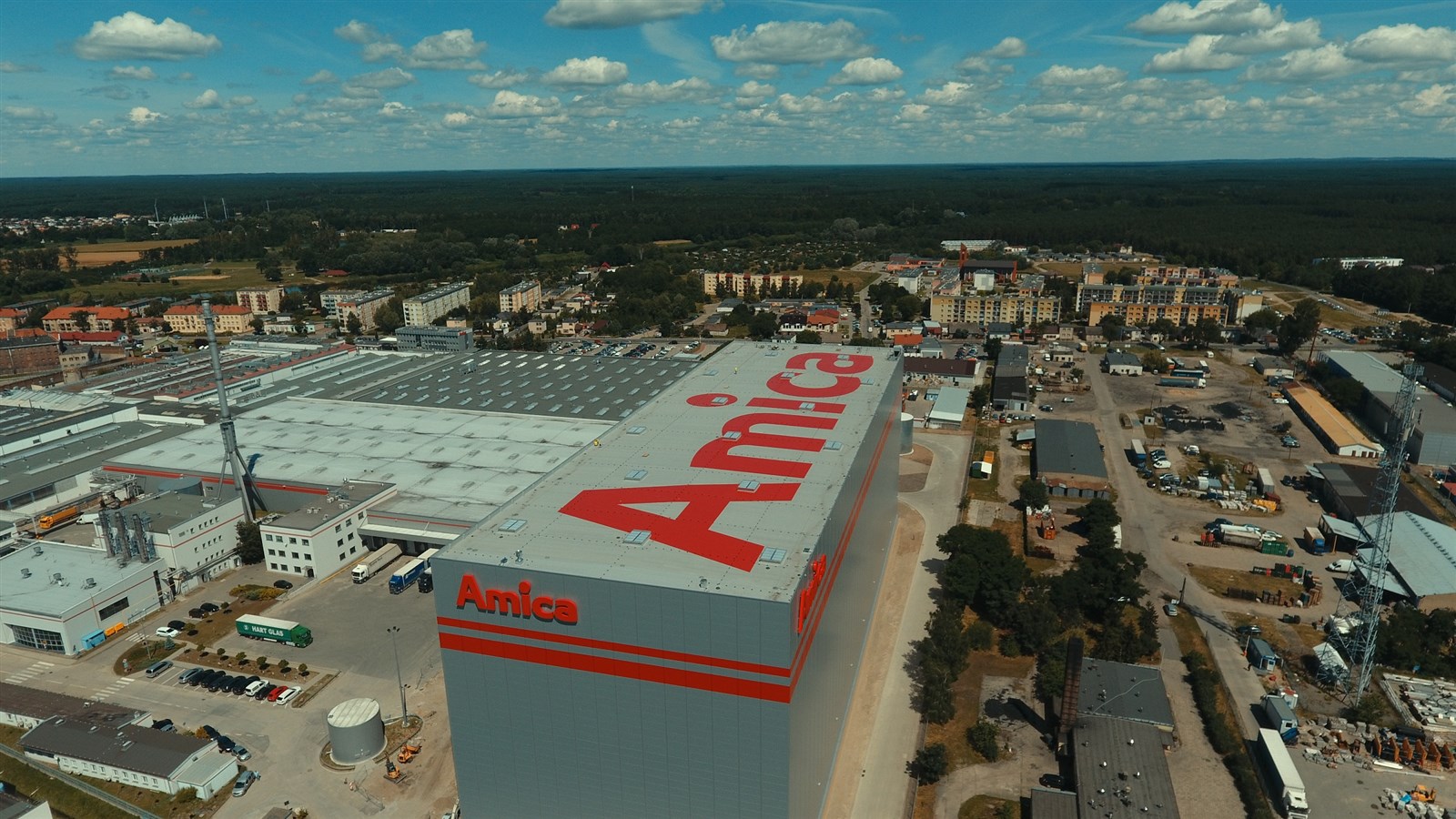Amica's warehouse of the future

2023 marks six years since the construction of Poland's tallest high-bay warehouse. Compared to traditional warehouses, the investment is greener, safer and requires less labour, and customers receive their orders faster. All this with the support of artificial intelligence, which ensures full automation.
The warehouse is a structure over 46 metres high. It can be compared to an apartment building with 15 floors. On 6,500 square metres, there are 26,000 pallet spaces, which can accommodate up to 230,000 units of large white goods at a time.
Warehouses of this kind have been used in Europe for a long time, but in the Polish white goods industry no one has applied such innovative solutions on such a huge scale before. To date, no one has yet managed to repeat this success.
A huge change is the way goods are arranged. Household appliance manufacturers store goods in blocks and the trolleys can pick several products at a time. Usually the storage halls cannot be too high, due to the strength of the packaging. Appliances stacked on top of each other, without additional protection, could be damaged. Amica decided to introduce a completely new solution.
- The Amica warehouse stands out in the market, even though it was built in 2017 it is still extremely modern. Prior to the decision to build it, there were virtually no comparable automated warehouses in the industry, making our solution innovative and requiring almost all processes to be defined from start to finish. Beginning with stacker cranes equipped with cameras to prevent damage to racks and goods, through the MCC system, which manages the operation of stacker cranes, conveyors, the issuing and receiving of goods, to the management of continuous stocktaking," explains Robert Stobiński - Vice President of Operations at the Amica Group.
The warehouse in Wronki consists of five stacker cranes, almost 47 metres long, which place the goods in the right places. They are the most important element of the warehouse, as they are used to distribute and deliver pallets with goods at a speed of 180 metres per minute horizontally and 80 metres per minute vertically.
Full automation
The throughput capacity of the high-bay warehouse allows more than 180 pallets to be issued per hour and about 120 to be received. The fully automated self-managing control system allows about 1.6 thousand articles to be stacked per hour. Annually, this gives a capacity of up to 280,000 pallets! That's millions of products going to dozens of markets around the world.
The entire height warehouse is operated by just one person. The warehouse operates practically non-stop, which has also benefited customers, as deliveries have been shortened by at least 24 and often as much as 48 hours.
Safety and ecology
The use of machines also means that most of the work is carried out without the physical involvement of people, which increases safety. The innovative high-rise warehouse was intended to be, above all, safe.
The design of such a huge investment also took into account the comfort of the residents. The Amica Group installation does not generate noise or any kind of pollution. Even before the new warehouse was put into operation, the company introduced transport advising so as not to intensify truck traffic. A web-based truck advisory system was launched. At least twelve hours before loading, the system automatically starts to bring the pallets with the ordered products from the high bay warehouse. In this way, it was also possible to reduce a large part of the carbon footprint by eliminating transport to an external warehouse, thus saving local residents from air pollution and traffic disruption.
